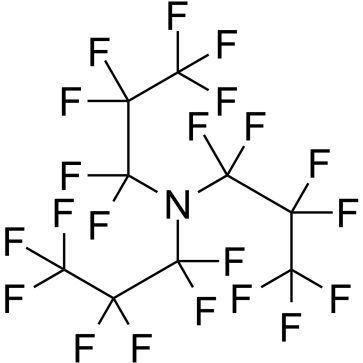Biochemical Assay Reagents
Biochemical agents refers to the life science research related to biological material or organic compounds. Due to a wide range of life sciences, rapid development, and therefore a wide variety of such agents, complex in nature. There are electrophoresis reagents, chromatography reagents, centrifuged reagents, immunological reagent, labeled reagent, staining agents, penetration agents and carcinogens variable, insecticides, culture, buffering agents, electron microscopy reagents, protein and nucleic acid precipitating agent, condensing agent ultrafiltration membrane, clinical diagnostic reagents, dyes, antioxidants, preservatives, detergents and surfactants, standard biochemical reagents, biochemical reagents quality control materials, separation material, etc..
Targets for Biochemical Assay Reagents
Products for Biochemical Assay Reagents
- Cat.No. Product Name Information
-
GC30271
γ-GT
γ-GT(63699-78-5) is a substrate for γ-glutamyl transferase in biochemical test.
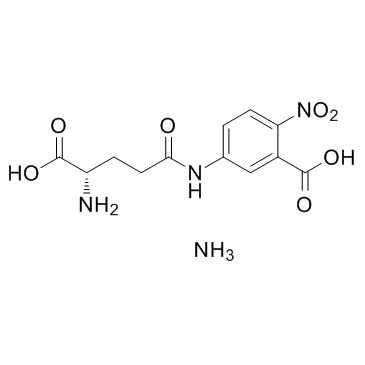
-
GC30358
(±)-1,2-Propanediol (1,2-(RS)-Propanediol)
(±)-1,2-Propanediol (1,2-(RS)-Propanediol) (1,2-(RS)-Propanediol) is an aliphatic alcohol and frequently used as an excipient in many drug formulations to increase the solubility and stability of drugs.

-
GC68497
1M6
1M6 is a reagent used for RNA structural chemistry detection.
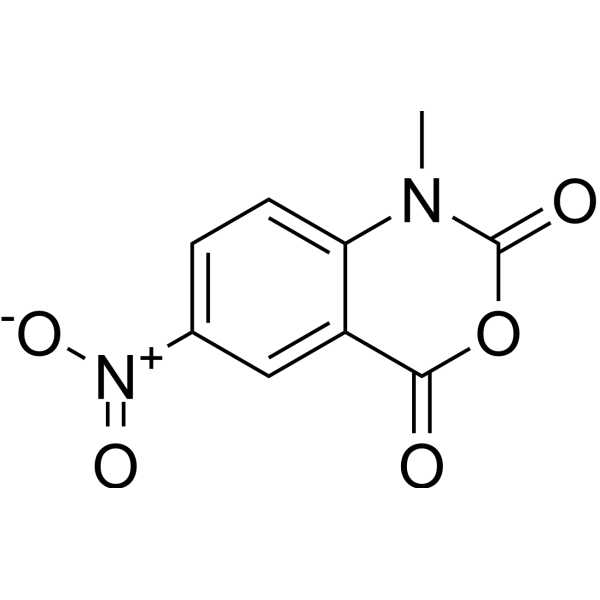
-
GC61938
2′-O-(2-Methoxyethyl)guanosine
2′-O-(2-Methoxyethyl)guanosine (2'-O-MOE-rG), a 2′-O-methoxyethyl-modified nucleoside, can be produced by enzymatic conversion (adenosine deaminase) from 2′-O-(2-methoxyethyl)-2,6-diaminopurine riboside.

-
GC62765
2’,3’-Dideoxy-5-iodouridine
2’,3’-Dideoxy-5-iodouridine is used for gene sequencing and as a research tool for antiviral and anticancer studies.
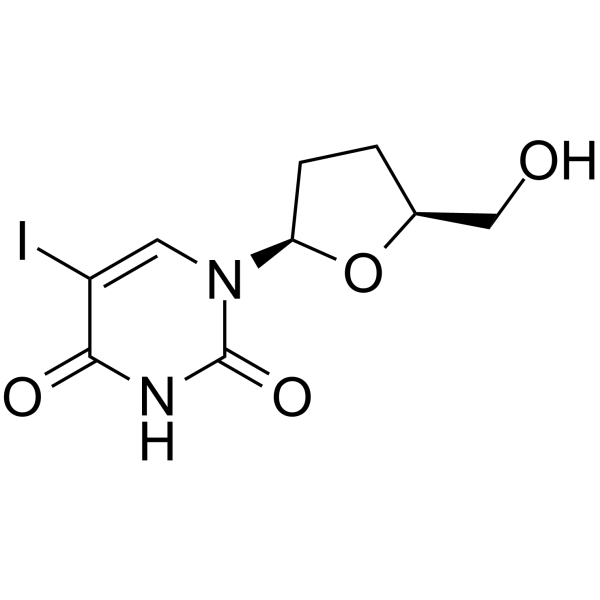
-
GC30076
2-(Pyridyldithio)ethylamine hydrochloride
2-(Pyridyldithio)ethylamine hydrochloride is a novel disulfide intercalating cross-linking reagent.
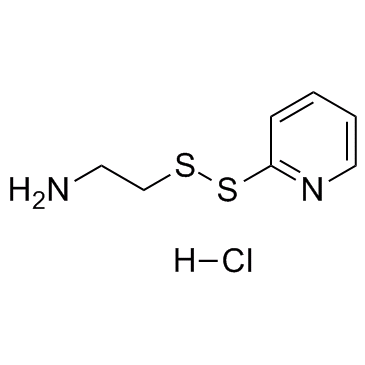
-
GC67463
2-Amino-2-methyl-1,3-propanediol
2-Amino-2-methyl-1,3-propanediol is a solid-solid phase change materials (PCMs). Amino-2-methyl-1,3-propanediol can be used to make surfactants, vulcanization accelerators and as a biological buffer.
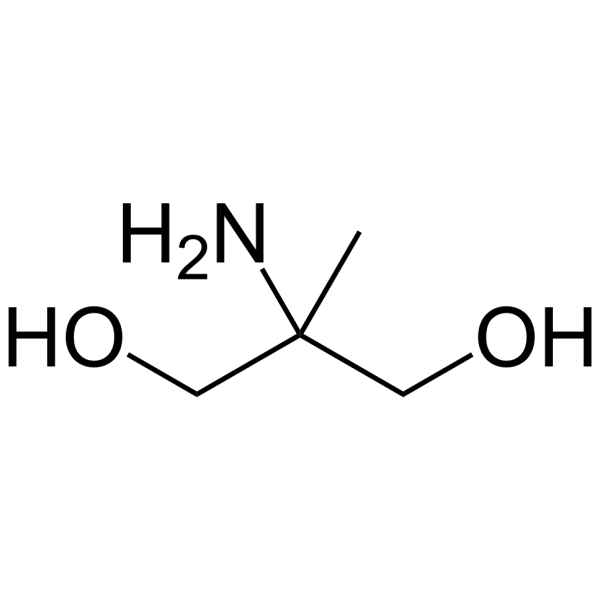
-
GC67634
2-Butenoyl coenzyme A lithium
2-Butenoyl coenzyme A (lithium), an active compound, can be used as a substrate for plasmodium falciparum enyl-ACP reductases and other enyl-CoA reductases. 2-Butenoyl coenzyme A lithium can be used as a substrate analogue to study the kinetics of β-hydroxyacyl-acyl-carrier protein (ACP) dehydratase (FabZ).
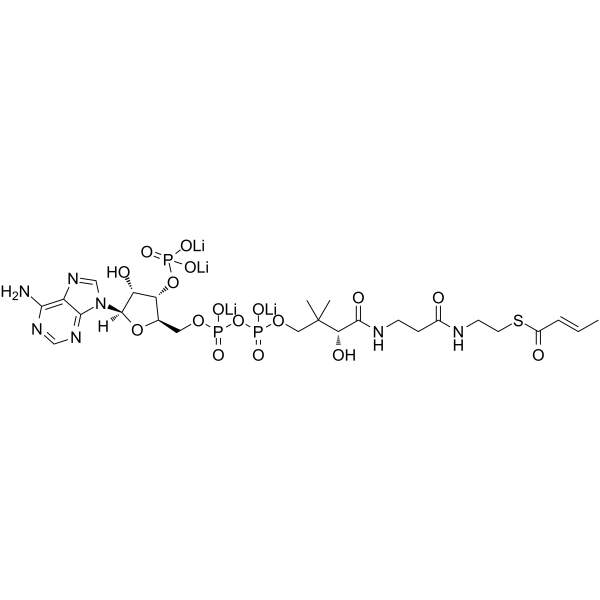
-
GC66259
2-Iminothiolane hydrochloride
2-Iminothiolane hydrochloride is a reagent for the introduction of sulphydryl groups into oligosaccharides derived from asparagine-linked glycans.
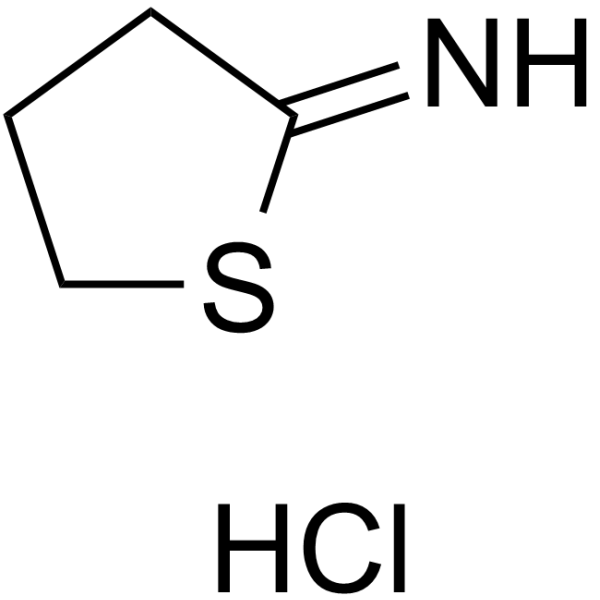
-
GC68527
3,4,5-Trichloropyridine
3,4,5-Trichloropyridine is a biochemical reagent that can be used as a biological material or organic compound for life science-related research.
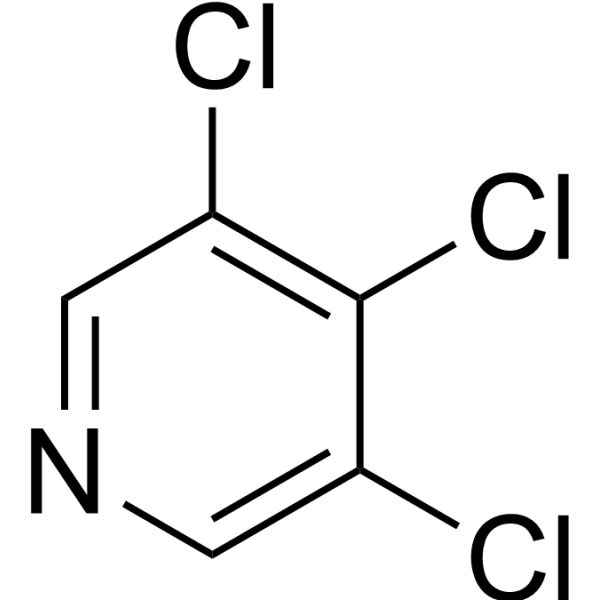
-
GC68528
3,5-Dimethylisoxazole-4-boronic acid pinacol ester
3,5-Dimethylisoxazole-4-boronic acid pinacol ester is a biochemical reagent that can be used as a biological material or organic compound for life science-related research.
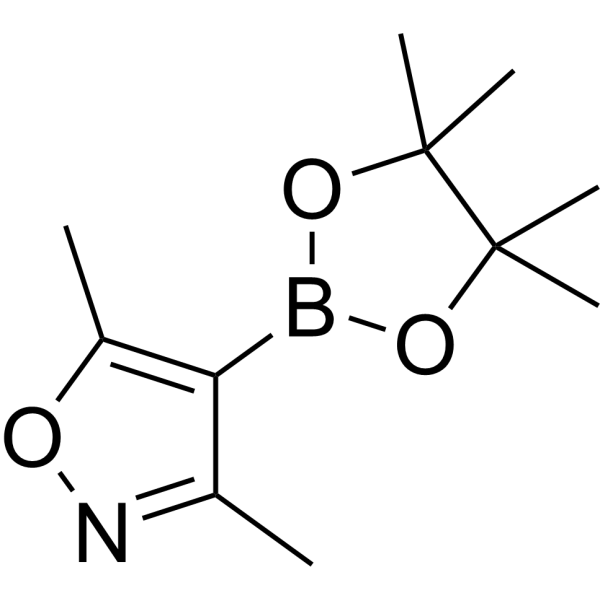
-
GC61657
4-Aminobenzaldehyde
4-Aminobenzaldehyde (p-aminobenzaldehyde) is a useful synthetic reagent and monomer that can be used to synthesize monoazo dyes and photocurable ion exchange resins.
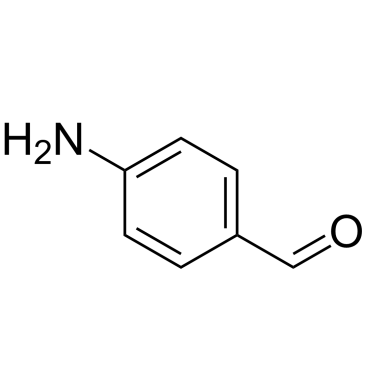
-
GC61893
4-Hydroxy-4-methylcyclohexanone
4-Hydroxy-4-methylcyclohexanone is a useful synthetic reagent extracted from patent JP2009022162A.
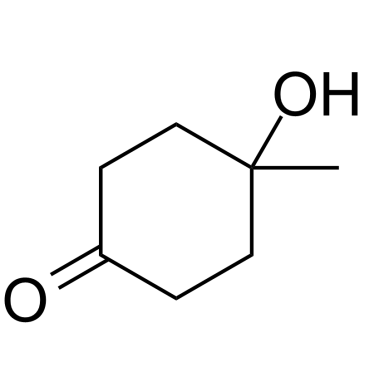
-
GA20423
4-Nitrophenyl β-D-galactopyranoside
Substrate for the determination of β-galactosidase.

-
GC61935
5'-O-(4,4'-Dimethoxytrityl)-2'-deoxyuridine
5'-O-(4,4'-Dimethoxytrityl)-2'-deoxyuridine (5'-O-DMT-dU) is a competitive inhibitor of E.
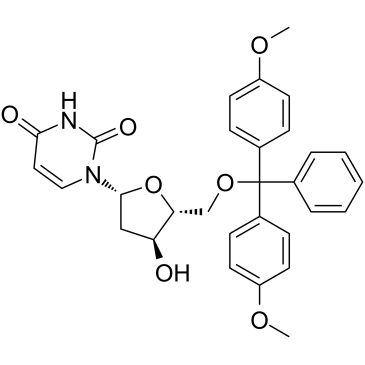
-
GC33596
5-BrdUTP sodium salt
5-BrdUTP sodium salt is a TdT substrate which can be used to label the DNA double-strand breaks.
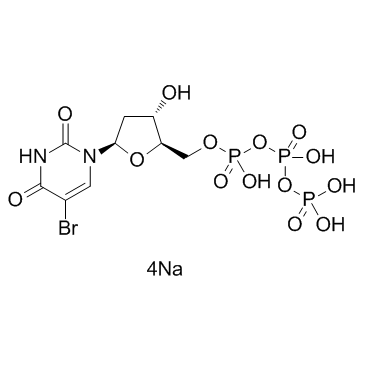
-
GC33520
5-BrUTP sodium salt
5-BrUTP sodium salt can be used to label RNA to measure the transcription.
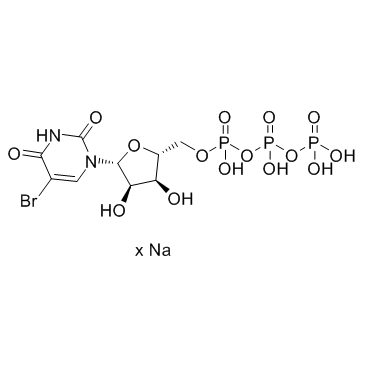
-
GC35183
6-O-α-Maltosyl-β-cyclodextrin
6-O-α-Maltosyl-β-cyclodextrin is a cellular cholesterol modifier which can form soluble inclusion complex with cholesterol.
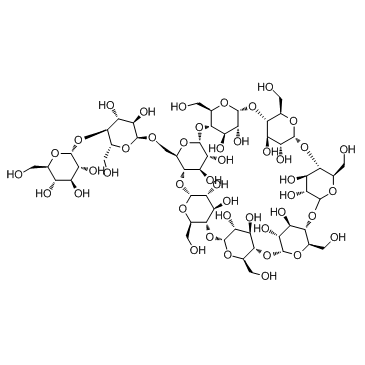
-
GC68577
7-Azaindazole
1H-Pyrazolo[3,4-b]pyridine is a biochemical reagent that can be used as a biological material or organic compound for research related to life sciences.
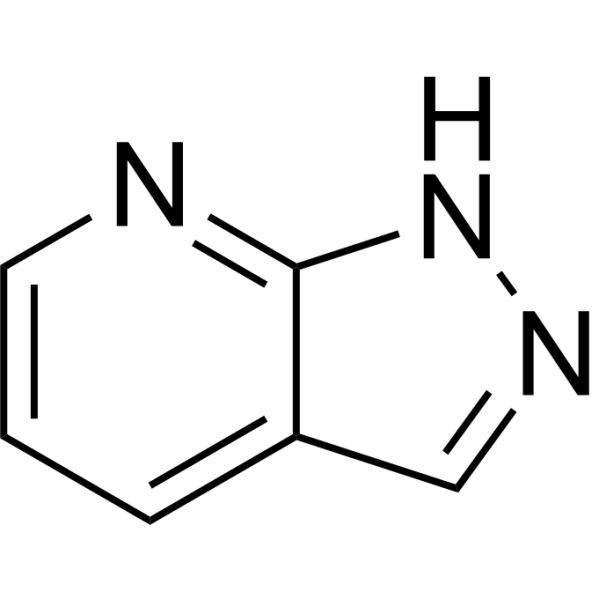
-
GC61877
7-Iodo-2',3'-dideoxy-7-deazaadenosine
7-Iodo-2',3'-dideoxy-7-deazaadenosine is a dideoxynucleoside that can be used in DNA synthesis and sequencing reactions.
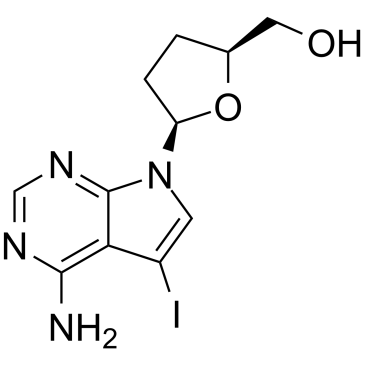
-
GC35215
AA-dUTP sodium salt
AA-dUTP sodium salt is a fluorescent dye which can be used to stain cDNA.
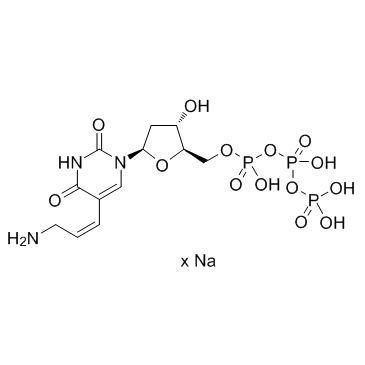
-
GC60565
ADA
ADA is a biological buffer.
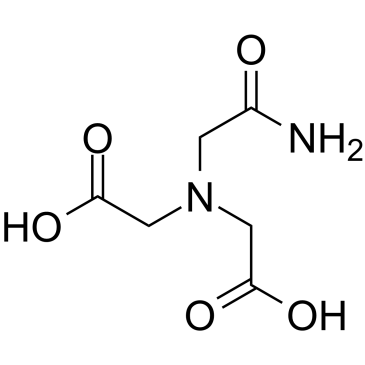
-
GC67265
Adenosine 3'-phosphate 5'-phosphosulfate lithium
Adenosine 3'-phosphate 5'-phosphosulfate lithium is a co-substrate used for the sulfonation of glycans. Adenosine 3'-phosphate 5'-phosphosulfate lithium can be used for Golgi-resident PAP-specific 3'-phosphatase-coupled sulfotransferase assays, which as donor substrate to transfer a sulfonate group.
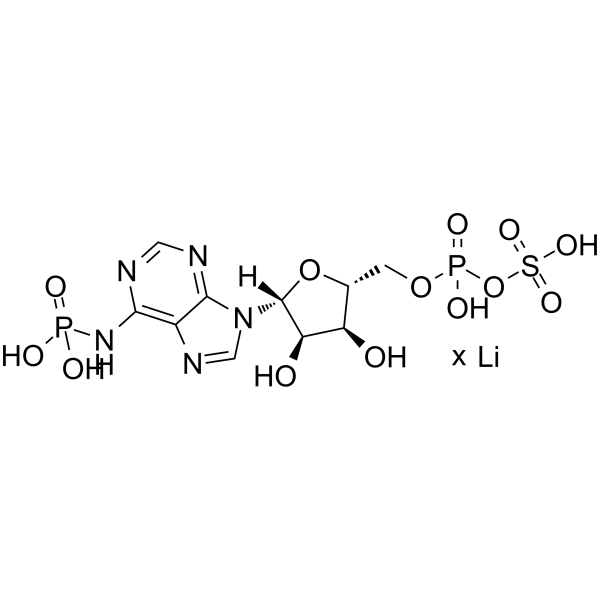
-
GC30436
ADPS (ESPAS)
ADPS (ESPAS) is a kind of new Trinder's reagents, which are high water-soluble aniline derivatives, widely used in diagnostic and biochemical tests.
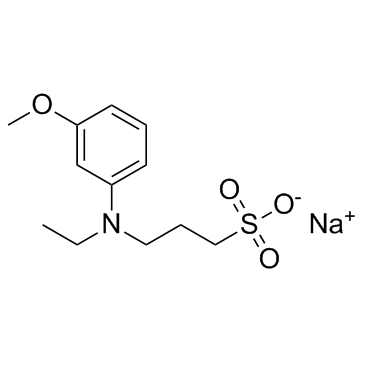
-
GC30019
AMPPD (Lumi-Phos Plus)
AMPPD (Lumi-Phos Plus), a 1,2-dioxo-cyclohexane derivative, is a biochemistry ultrasensitive alkaline phosphatase substrate.
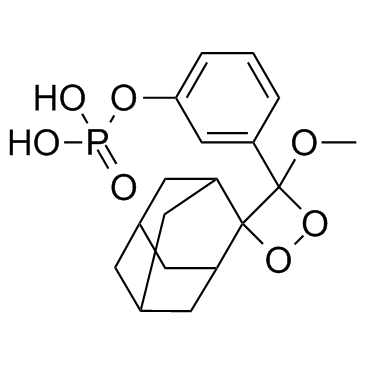
-
GC66480
AMPSO
AMPSO is an alkaline transfer buffer that can be used to transfer strongly basic proteins from gels into nitrocellulose without reducing the transfer efficiency of other proteins. AMPSO can be used for Western Blot analysis, PCR amplification and many other applications.
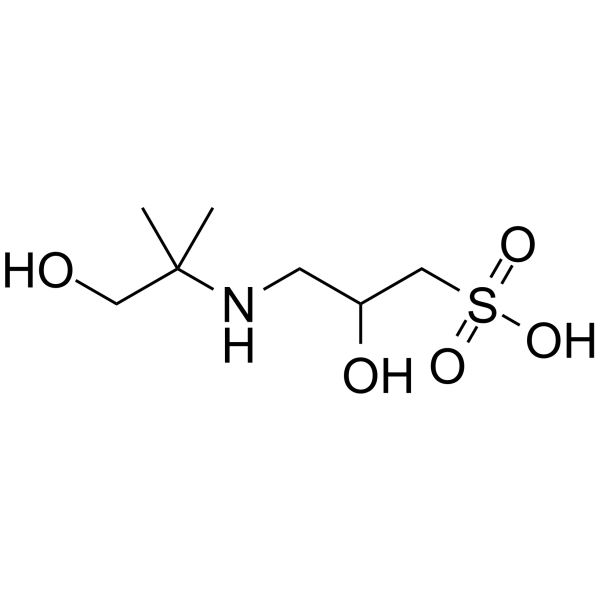
-
GC30199
BCA (Disodium bicinchoninate)
BCA (Disodium bicinchoninate) is 2,2-Biquinoline-4,4-dicarboxylic acid disodium salt; Determination of Cu and protein assay.
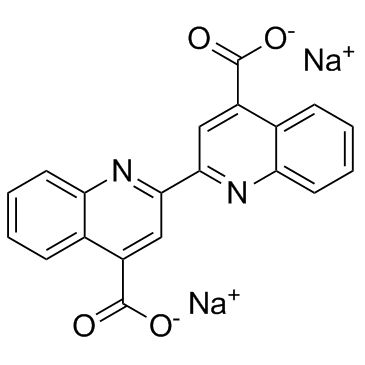
-
GC67469
BES
BES is a secondary standard biochemical buffer with effective pH range of 6.4 to 7.8 (pKa: 7.15 at 20 ℃). BES is used in the diagnostic testing area.
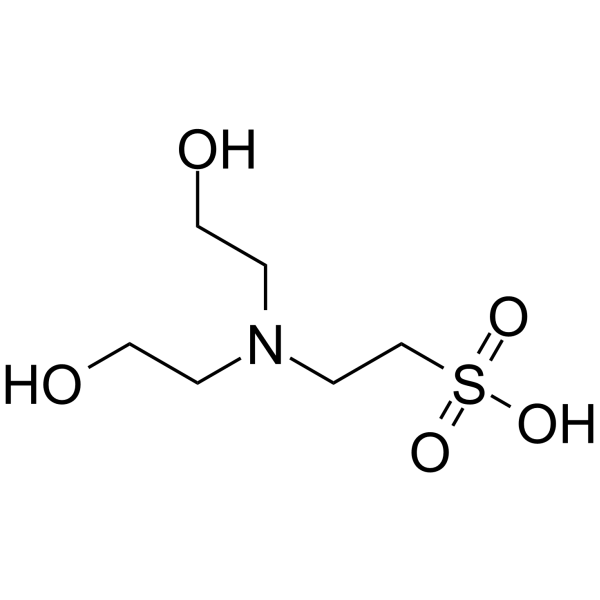
-
GC67531
BES sodium
BES sodium is a secondary standard biochemical buffer with effective pH range of 6.4 to 7.8 (pKa: 7.15 at 20 ℃). BES sodium is used in the diagnostic testing area.
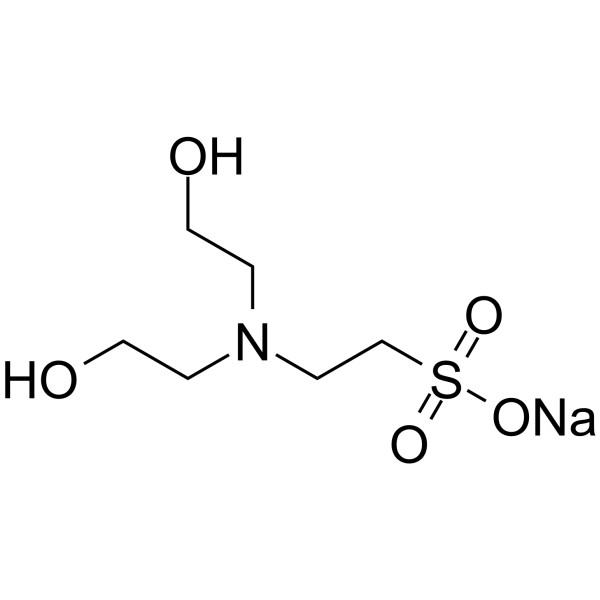
-
GC42935
Biotin LC hydrazide
Biotin LC hydrazide is a reactive probe that is used to biotinylate carboxyl or vicinal hydroxyl groups on carbohydrates, glycoproteins, or other glycoconjugates.

-
GC60645
Biotin-C1-PEG3-C3-amido-C5-Gly-Arg-Gly-N3 TFA
Biotin-C1-PEG3-C3-amido-C5-Gly-Arg-Gly-N3 TFA is used for detection of modification site for N-myristoylated and GPI-anchored proteins in blood-stage P.
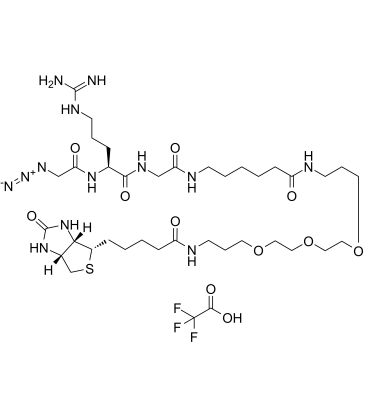
-
GC33812
Biotin-DADOO (Biotinyl-3,6-dioxaoctanediamine)
Biotin-DADOO (Biotinyl-3,6-dioxaoctanediamine) is a biotinylation reagent, which can be used to synthesize a biotin-estradiol conjugate (i.
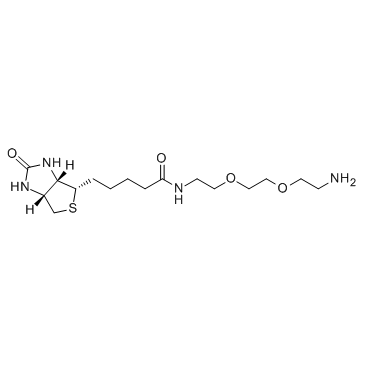
-
GC42940
Biotin-XX hydrazide
Biotin-XX hydrazide is a biotylating reagent for carbohydrates and carbonyl compounds that contains two aminohexanoic spacers to increase the efficiency of avidin-binding by alleviating steric hindrance.

-
GC67626
Bis-Tris hydrochloride
Bis-Tris hydrochloride is a biological buffer, and can be used in gel electrophoresis separations, cell culture and bioprocessing applications.
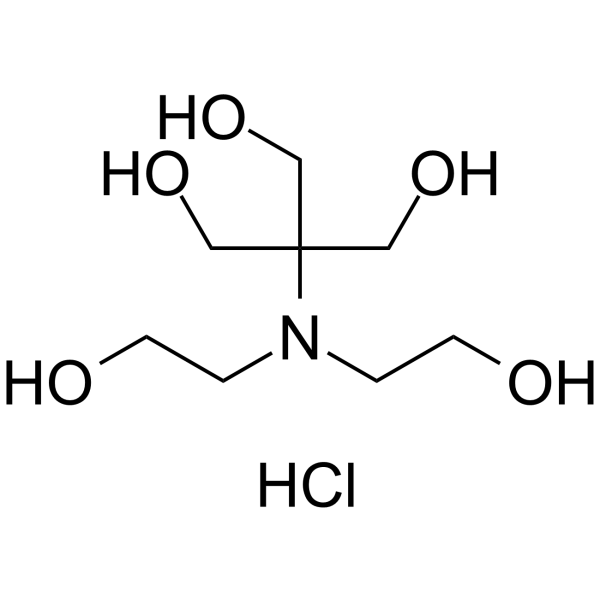
-
GC66839
Bis-tris propane
Bis-tris propane (BTP) is a water-soluble buffer substance. Bis-tris propane can be used as a suitable buffer for polymerase chain reaction (PCR). Bis-tris propane can enhance the stability or activity of restriction enzymes.
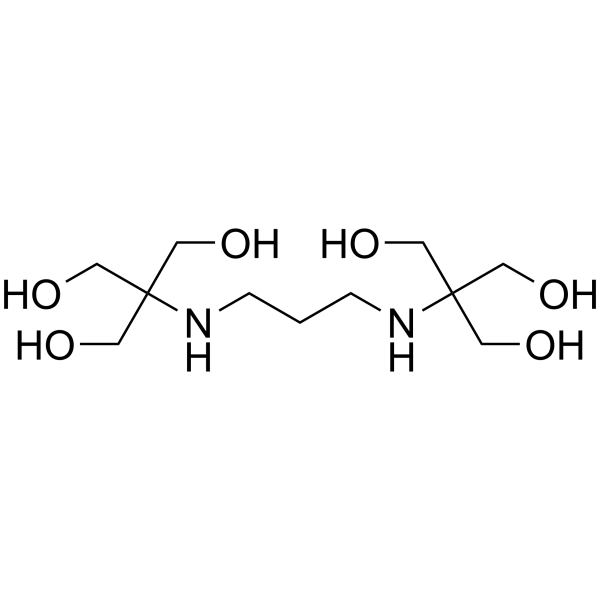
-
GC35542
Bovine Serum Albumin (BSA)
Bovine Serum Albumin (BSA) (BSA) is a 583-residue protein consisting of three homologous all-α domains, organized in a heart-shaped structure.

-
GC39269
Caprylic/Capric Triglyceride
Caprylic/Capric Triglyceride is the triglycerides and esters prepared from fractionated vegetable oil sources and fatty acids from coconuts and palm kernel oils.
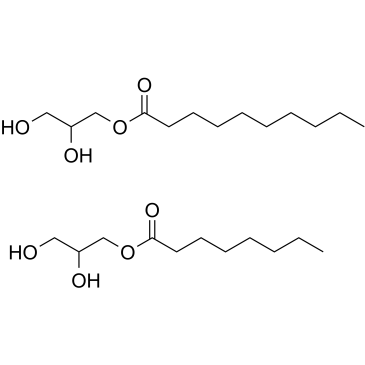
-
GC65571
CAPS
CAPS, cyclohexylaminopropane sulfonic acid, is a surfactant.
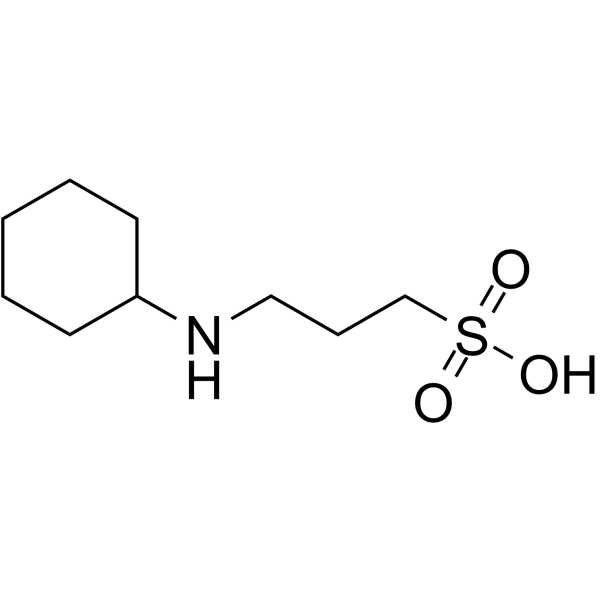
-
GC66840
CAPSO
CAPSO is a biological zwitterionic buffer with the useful pH range from 8.9 to 10.3.
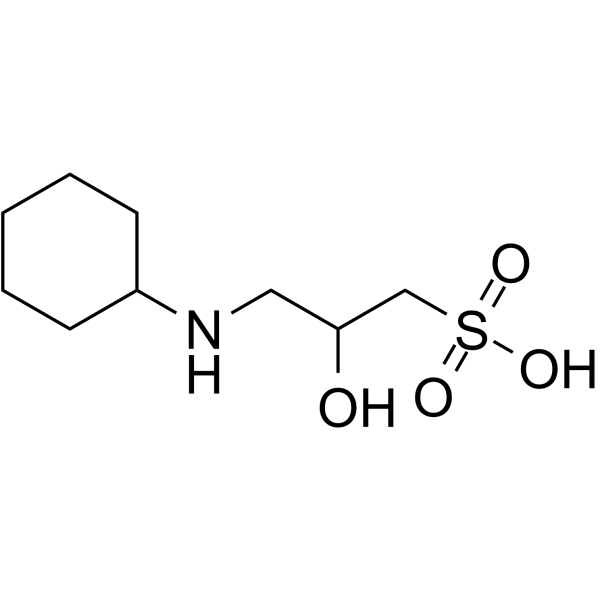
-
GC30160
Cellulose carboxymethyl ether sodium
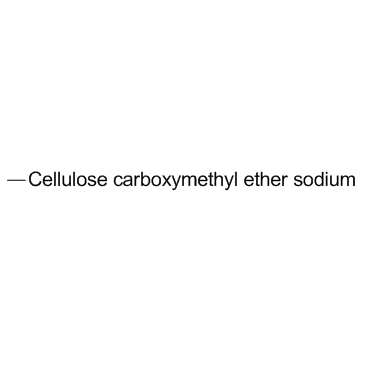
-
GC64978
CHES
CHES (N-Cyclohexyltaurine) is a zwitterionic buffer.
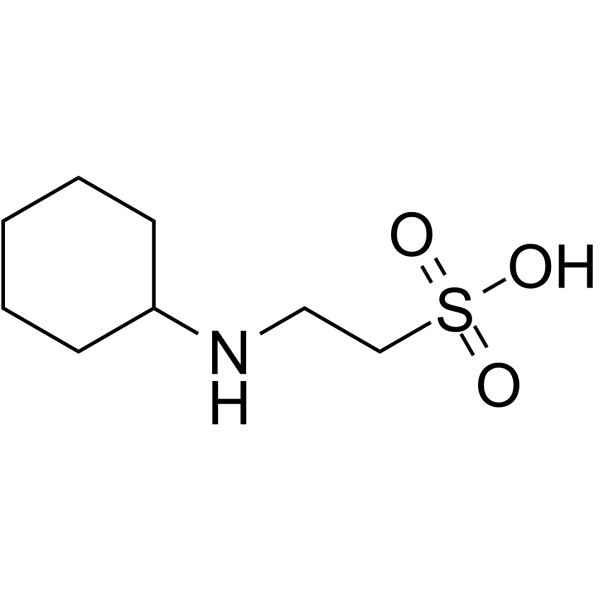
-
GC30407
CNP-AFU (2-Chloro-4-nitrophenyl α-L-fucopyranoside)
CNP-AFU (2-Chloro-4-nitrophenyl α-L-fucopyranoside) (2-Chloro-4-nitrophenyl α-L-fucopyranoside) is a substrate for alpha-L-fucosidase(AFU).
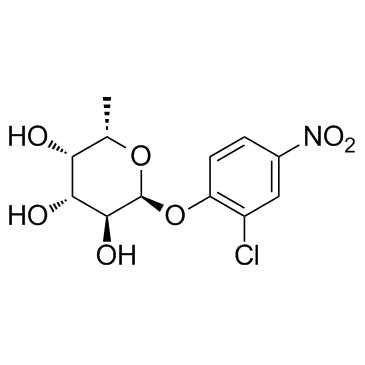
-
GC32712
Corn oil
Corn oil, extracted from the germ of corn, can be used as a carrier for drug molecules.
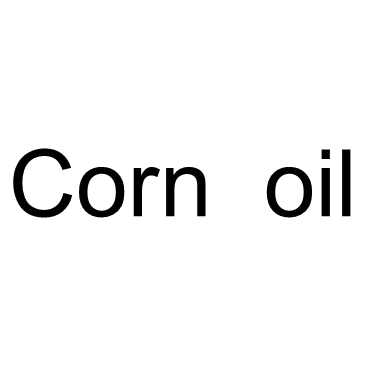
-
GC30559
COTTONSEED OIL
Cottonseed oil is a cooking oil extracted from the seeds of cotton plants and has been generally considered the most insecticidal of vegetable oils.
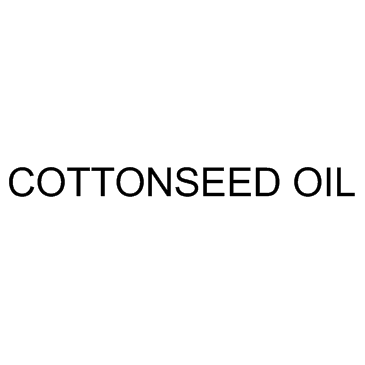
-
GC30024
Cremophor EL
Cremophor EL, a polyoxyethylene castor oil derivative, is a nonionic surfactant.
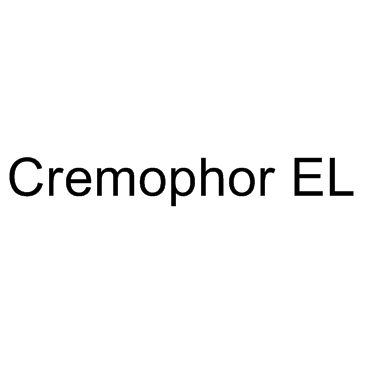
-
GC68918
Cy5.5-SE
Cy5.5-SE (Cyanine5.5 NHS ester) is a type of CY dye. CY stands for Cyanine, which is a compound composed of two nitrogen atoms connected by an odd number of methyl units. Cyanine compounds have characteristics such as long wavelength, adjustable absorption and emission, high extinction coefficient, good water solubility, and relatively simple synthesis. CY series dyes are often used to label proteins, antibodies and small molecules. For labeling protein antibodies, binding can be completed through a simple mixing reaction. The following describes the labeling method for protein antibody labeling and has some reference value. Storage: Avoid light.
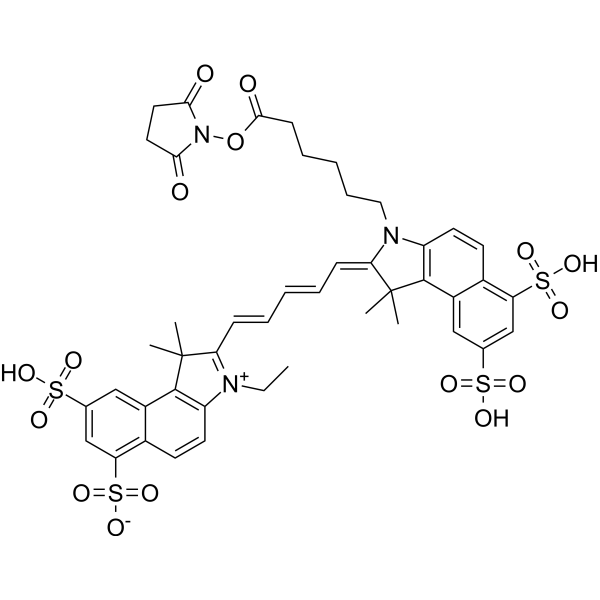
-
GC30312
DAOS
DAOS, a Trinder's reagent, is a novel highly water-soluble aniline derivative; are widely used in diagnostic tests and biochemical tests.
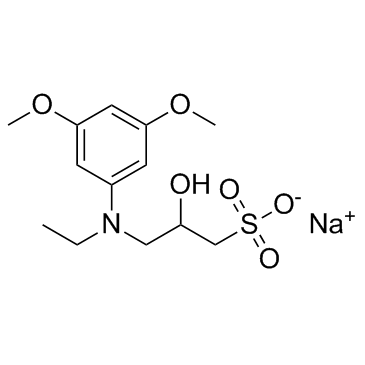
-
GC66166
Diethyl pyrocarbonate
Diethyl pyrocarbonate is a potent, non-specific chemical inhibitor of RNase. Diethyl pyrocarbonate has been useful in vitro as an agent relatively specific for binding to imidazole of histidine. Diethyl pyrocarbonate inhibits central chemosensitivity in rabbits. Diethyl pyrocarbonate can modify Ser, Thr, His and Tyr residues.
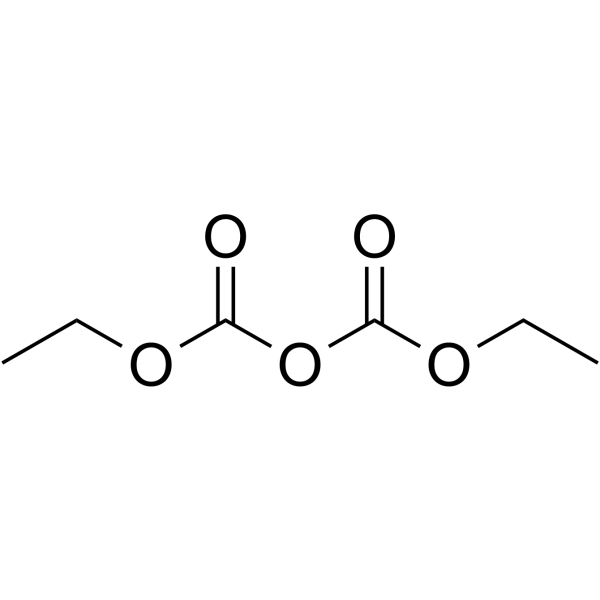
-
GC66181
Disodium pyrophosphate
Disodium pyrophosphate (SAPP), a food additive, is an inorganic compound. Disodium pyrophosphate has potential hematotoxic and immunotoxic effects.
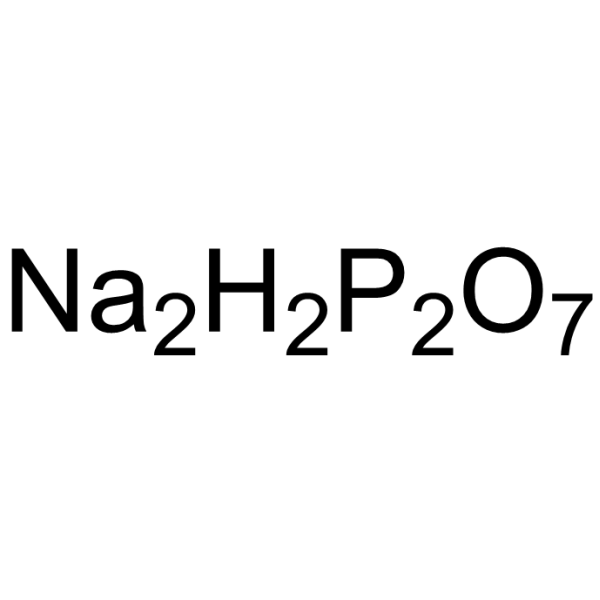
-
GC67635
DL-3-Hydroxy-3-methylglutaryl coenzyme A disodium
DL-3-Hydroxy-3-methylglutaryl coenzyme A (HMG-CoA) disodium is a disodium salt compound of HMG-CoA, is a intermediate of terpenes and ketone bodies. DL-3-Hydroxy-3-methylglutaryl coenzyme A disodium also involves in ester metabolism in vivo, as a precursor for cholesterol synthesis, and regulates cholesterol synthesis by coupling LDL receptor.
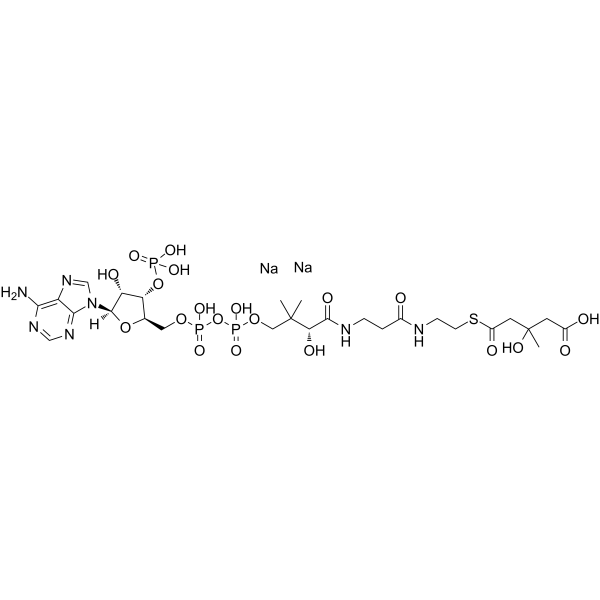
-
GC67468
Dodecyltrimethylammonium chloride
Dodecyltrimethylammonium chloride is a cationic surfactant, can be used for the formation of nanocapsules.
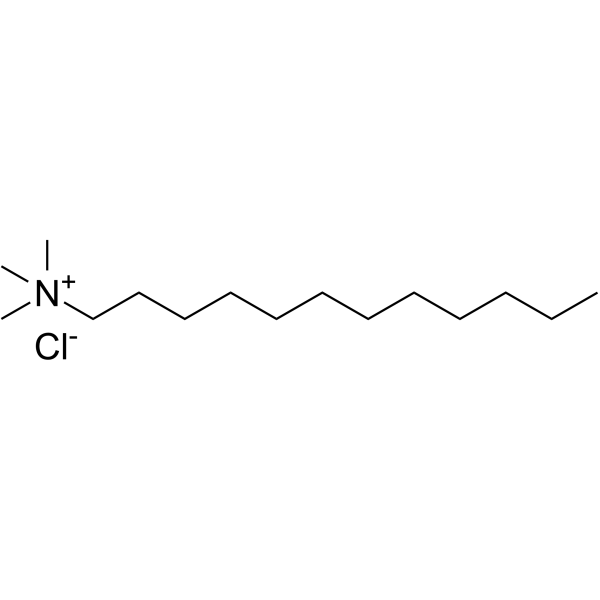
-
GC67667
DSPE-PEG-Azide (MW 2000)
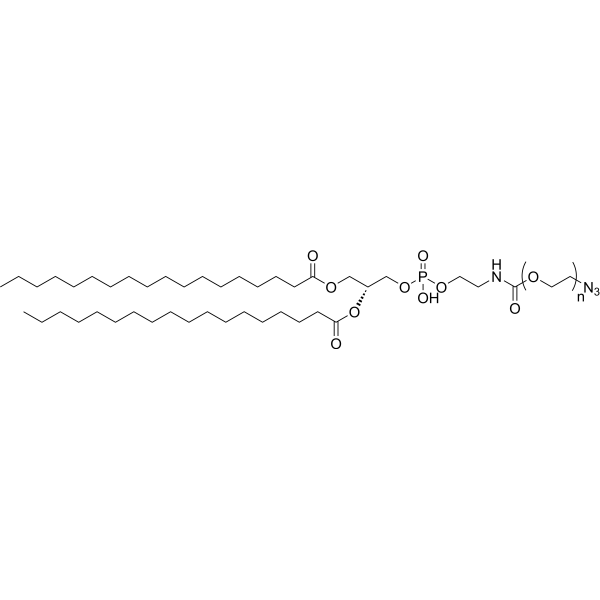
-
GC33483
DTE (Dithioerythritol)
DTE (Dithioerythritol) (Dithioerythritol) is a sulfur containing sugar derived from the corresponding 4-carbon monosaccharide erythrose; is an epimer of dithiothreitol(DTT).
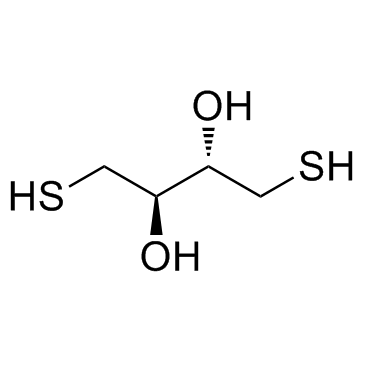
-
GC30009
DTNB (Ellman's Reagent)
DTNB (Ellman's Reagent) (Ellman's Reagent) is a chemical used to quantify the number or concentration of thiol groups.
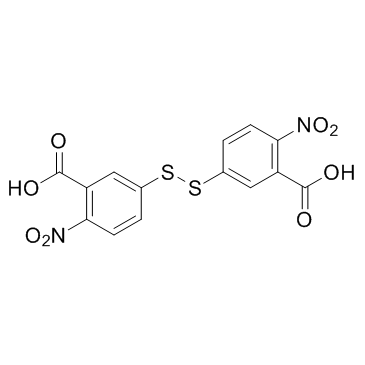
-
GC35905
DTT
DTT is a small-molecule redox reagent.
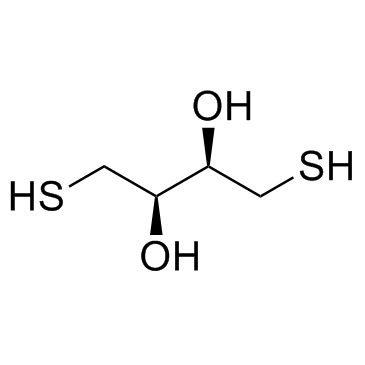
-
GC43589
EGTA AM
EGTA AM is a cell-permeant acetoxymethyl ester of the calcium chelator EGTA.

-
GC30137
Enbucrilate (Butyl cyanoacrylate)
Enbucrilate (Butyl cyanoacrylate) (Butyl cyanoacrylate) is a cyanoacrylate ester that has been used as surgical tissue adhesive.
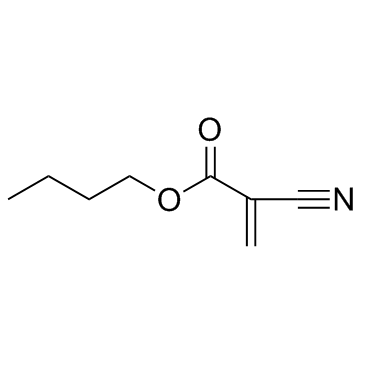
-
GC67534
Ethylenediaminetetraacetic acid sodium hydrate
Ethylenediaminetetraacetic acid (EDTA) sodium hydrate is a metal chelators (binds to metal divalent and trivalent cations including calcium), which shows activities of anticoagulant and anti-hypercalcemic. Ethylenediaminetetraacetic acid sodium hydrate decreases the metal ion-catalyzed oxidative damage to proteins, and allows maintenance of reducing environment during protein purification. Ethylenediaminetetraacetic acid sodium hydrate can also decrease the formation of disulfide bonds.
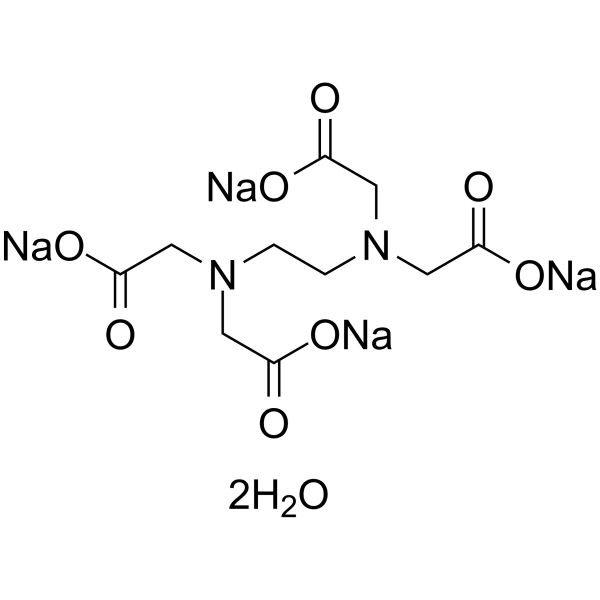
-
GC33433
Fluorescein Diacetate (3,6-Diacetoxyfluoran)
Fluorescein diacetate is a cell permeable esterase-substrate.
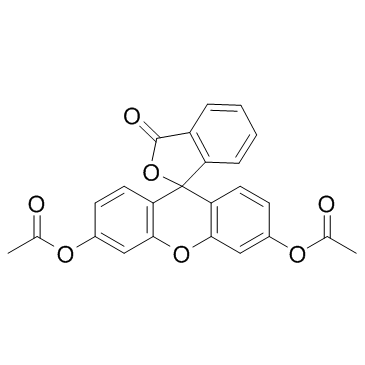
-
GC64743
Gelatins
Gelatins are translucent, colorless, flavorless food ingredient, commonly derived from collagen taken from animal body parts.

-
GC34591
Gelucire 14/44
Gelucire 14/44 is a potential and safe absorption enhancer for improving the absorption of poorly absorbable drugs including insulin and calcitonin by pulmonary delivery.
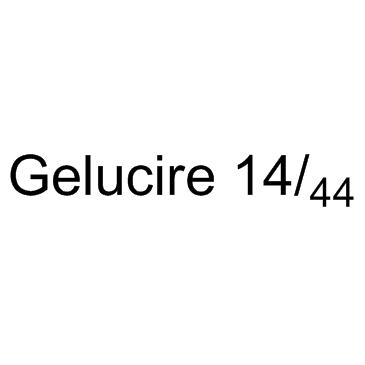
-
GC67643
Glutaryl coenzyme A lithium
Glutaryl coenzyme A lithium is a Glutaryl coenzyme A derivative. Glutaryl coenzyme A is an important endogenous metabolites. Glutaryl coenzyme A lithium can be used in HMG-CoA or Glutaryl-CoA related experiment.
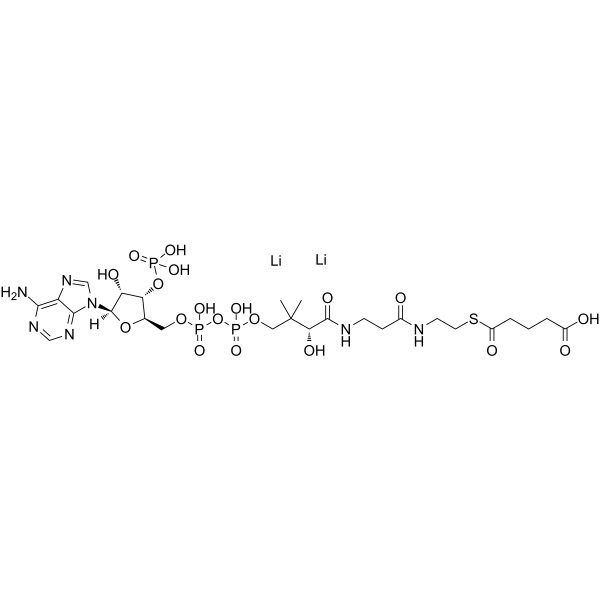
-
GC64438
Gold(III) chloride trihydrate
Gold(III) chloride trihydrate is a reducing agent.
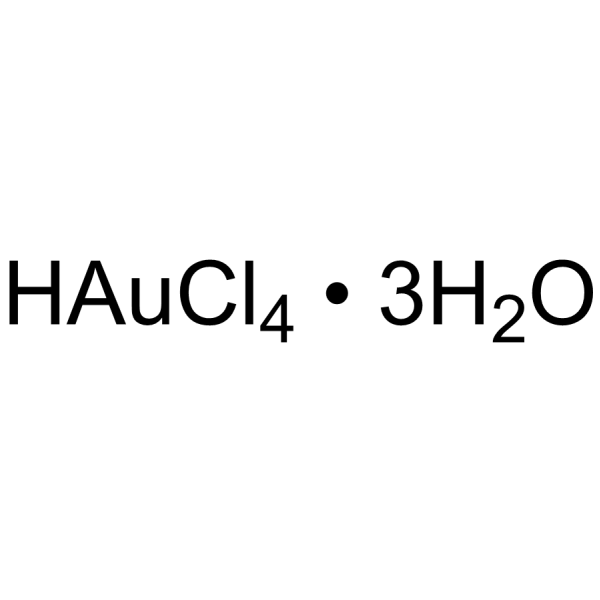
-
GC18983
H-Gly-Pro-Arg-Pro-OH (acetate)
H-Gly-Pro-Arg-Pro-OH (acetate) (Gly-Pro-Arg-Pro acetate) is a fibrin polymerization inhibitor that inhibits the interaction of fibrinogen with the platelet membrane glycoprotein IIb/IIIa complex (GPIIb/IIIa).
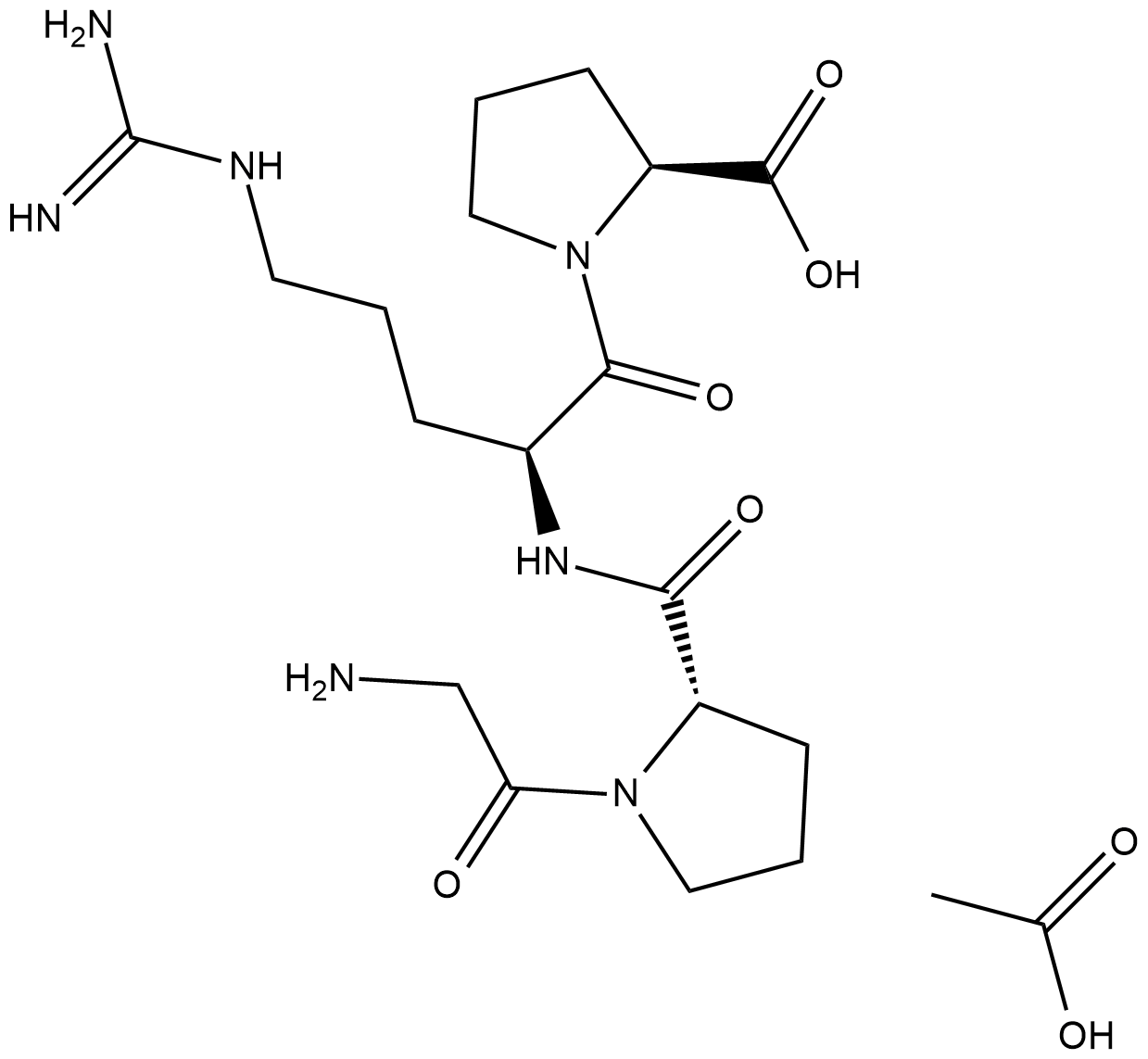
-
GC30359
HDAOS
HDAOS is a novel Trinder's reagent, which is a highly water-soluble aniline derivative; are widely used in diagnostic tests and biochemical tests.
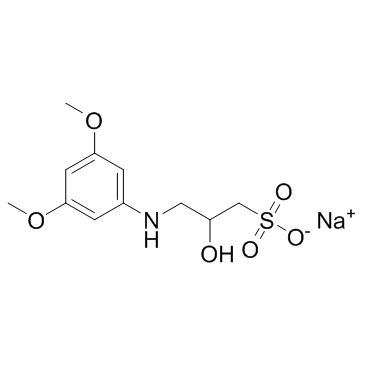
-
GC66481
HEPBS
HEPBS is a zwitterionic buffering agent with a pH range (7.6-9.0) similar to that of biological systems. HEPBS can be used in the culture of cells.
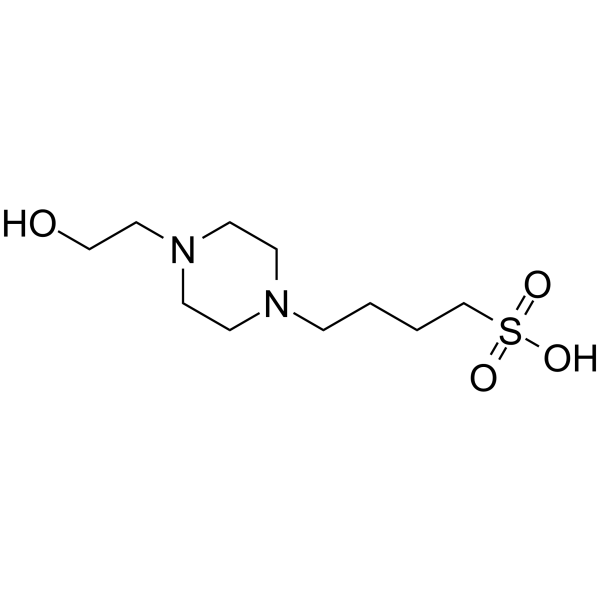
-
GC60895
HEPPSO
HEPPSO is a zwitterionic buffer.
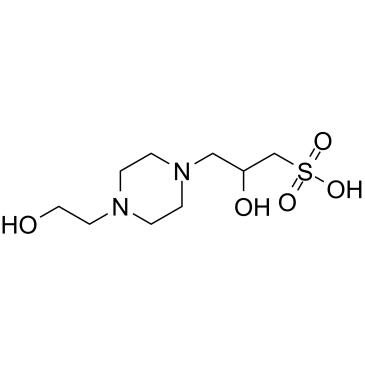
-
GC30315
HTBA
HTBA(3-Hydroxy-2,4,6-triiodobenzoic acid) for your research needs.
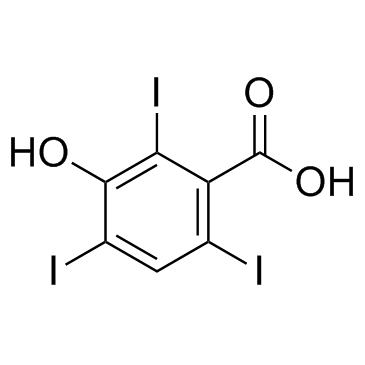
-
GC63013
I-bu-rG Phosphoramidite
I-bu-rG Phosphoramidite is a phosphinamide monomer which can be used in the synthesis of nucleotides and nucleic acids.
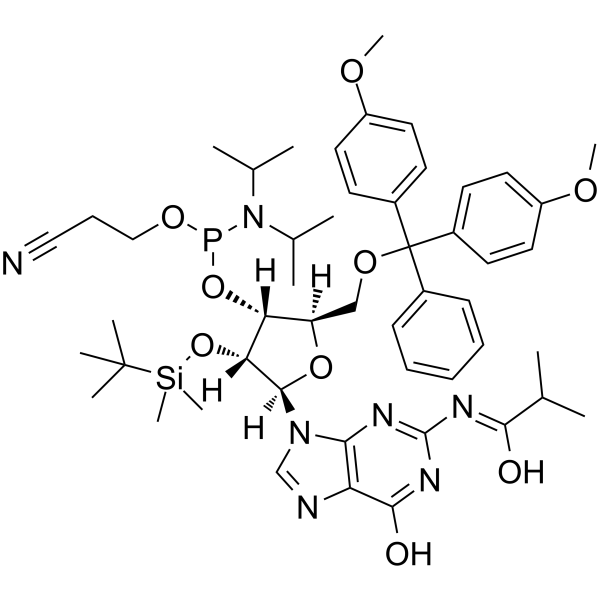
-
GC30118
INT (Iodonitrotetrazolium chloride)
INT (Iodonitrotetrazolium chloride)(Iodonitrotetrazolium chloride) is used in various dehydrogenase colorimetric analysis of the electron acceptor.
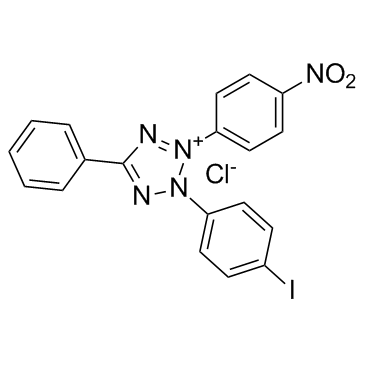
-
GC30002
IPTG (Isopropyl β-D-thiogalactoside)
IPTG (Isopropyl β-D-thiogalactoside) is a molecular mimic of allolactose, a lactose metabolite that triggers transcription of the lac operon, and it is therefore used to induce protein expression where the gene is under the control of the lac operator.
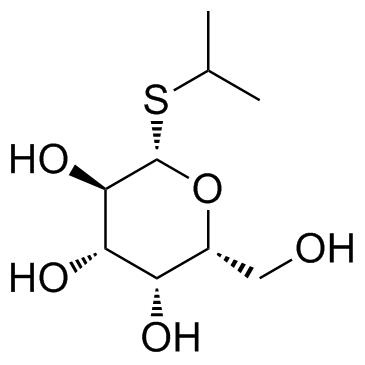
-
GC60995
Lipopolysaccharides from Escherichia coli 055:B5
Lipopolysaccharide (LPS) is vital to both the structural and functional integrity of the Gram-negative bacterial outer membrane.
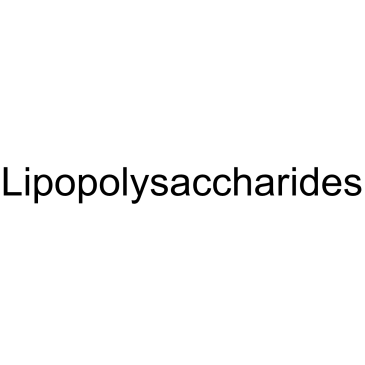
-
GC67466
Lithium dodecyl sulfate
Lithium dodecyl sulfate is an anionic detergent and surfactant that can be used in place of SDS for electrophoresis under low temperatures. Lithium dodecyl sulfate can be used for synthesis of nanomaterials and chromatography.
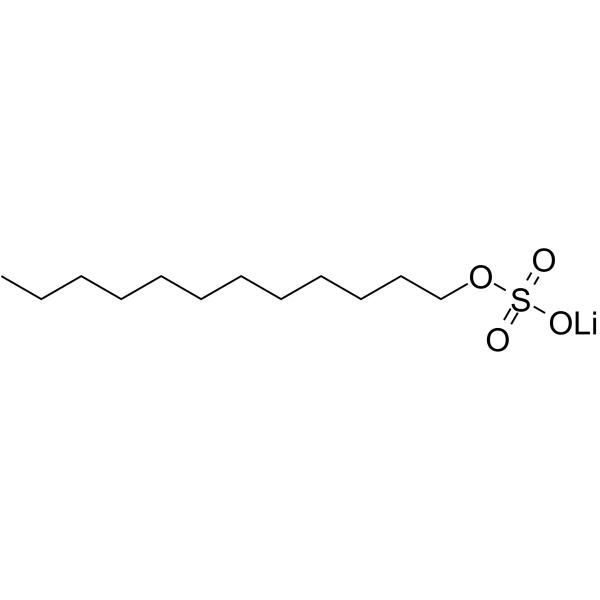
-
GC65397
Magnesium sulfate
Magnesium sulphate is currently the anticonvulsant of choice for the prevention and control of eclamptic fits.
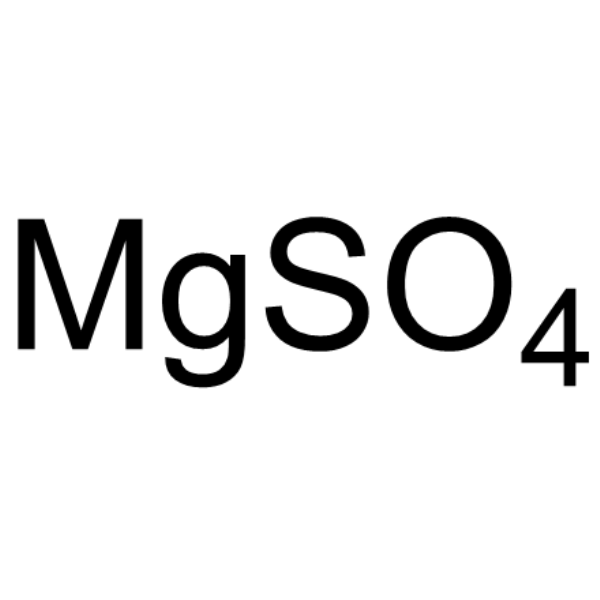
-
GC38813
Mebrofenin
Mebrofenin (SQ 26962) is a type of iminodiacetic acid (IDA).
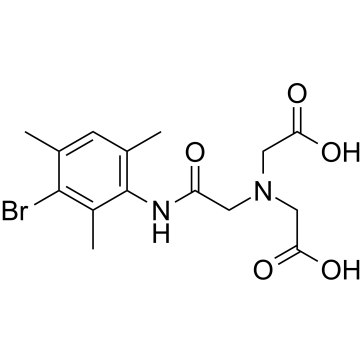
-
GC66496
MES monohydrate
MES (2-Morpholinoethanesulphonic acid) monohydrate is a buffering agent in biology and biochemistry. MES monohydrate is one of the Good's buffers, the buffer capacity ranging pH 5.5-7.0. MES monohydrate is broadly used to regulate pH value for plants culture medium, reagent solution, and physiological experiments.
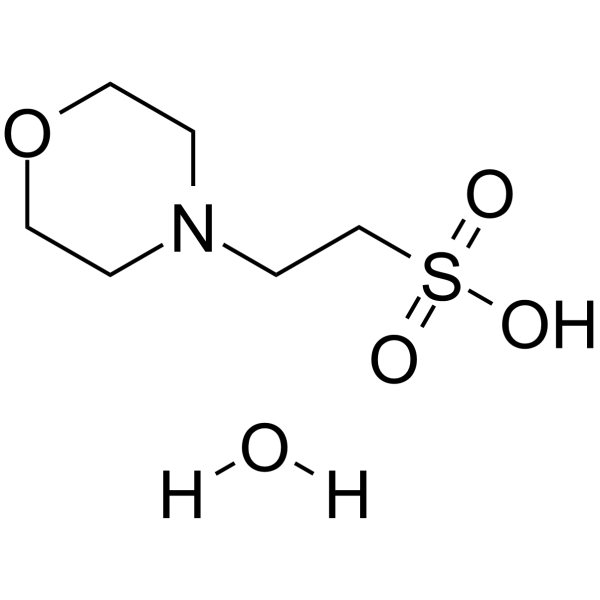
-
GC66488
MES potassium
MES (2-Morpholinoethanesulphonic acid) potassium is a buffering agent in biology and biochemistry. MES potassium is one of the Good's buffers, the buffer capacity ranging pH 5.5-7.0. MES potassium is broadly used to regulate pH value for plants culture medium, reagent solution, and physiological experiments.
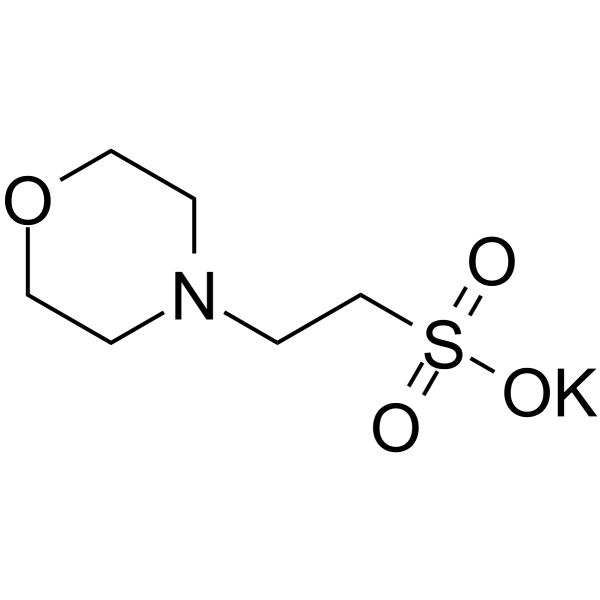
-
GC61042
MES sodium salt
MES (2-Morpholinoethanesulphonic acid) sodium salt is a buffering agent in biology and biochemistry.
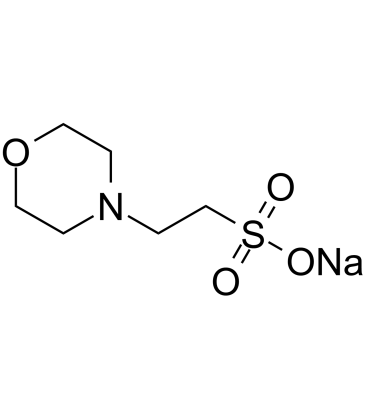
-
GC50290
MES, free acid
MES, free acid (2-Morpholinoethanesulphonic acid) is a buffering agent in biology and biochemistry.

-
GC38303
Methyl cellulose
Methylcellulose is a natural polymer which gels on heating.

-
GC32697
Methyl-β-cyclodextrin (Methyl-beta-cyclodextrin)
Methyl-β-cyclodextrin (Methyl-beta-cyclodextrin) (Methyl-beta-cyclodextrin) is a cyclic heptasaccharide used to deliver hydrophobic drugs based on its property of solubilizing non-polar substances. Methyl-β-cyclodextrin (Methyl-beta-cyclodextrin) is also extensively used as a cholesterol-depleting reagent. Methyl-β-cyclodextrin (Methyl-beta-cyclodextrin) strongly reduces clathrin-dependent endocytosis.
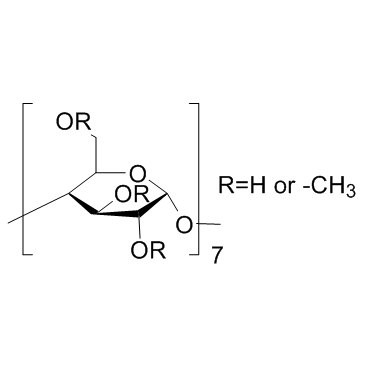
-
GC36601
Methylproamine
Methylproamine is a DNA-binding radioprotector, acts by repair of transient radiation-induced oxidative species on DNA.
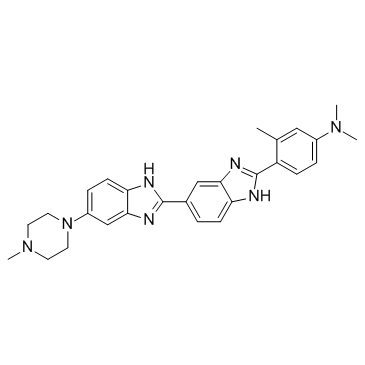
-
GC38816
Metrizoic acid
Metrizoic acid (Metrizoate) is an ionic contrast medium.
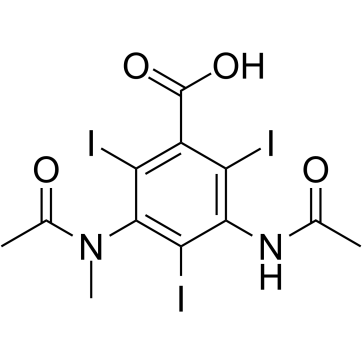
-
GC61063
Mid-chain triglyceride of caprylic/caprolic acid
Mid-chain triglyceride of caprylic/caprolic acid can be used as a co-solvent.
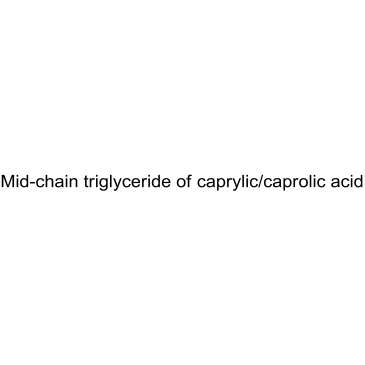
-
GC67462
MOBS
MOBS is an amphoteric buffer, a butane analogue of the Good buffers MOPS [3-(N-morpholino) propanesulfonic acid] and MES [2-(N-morpholino) ethanesulfonic acid].
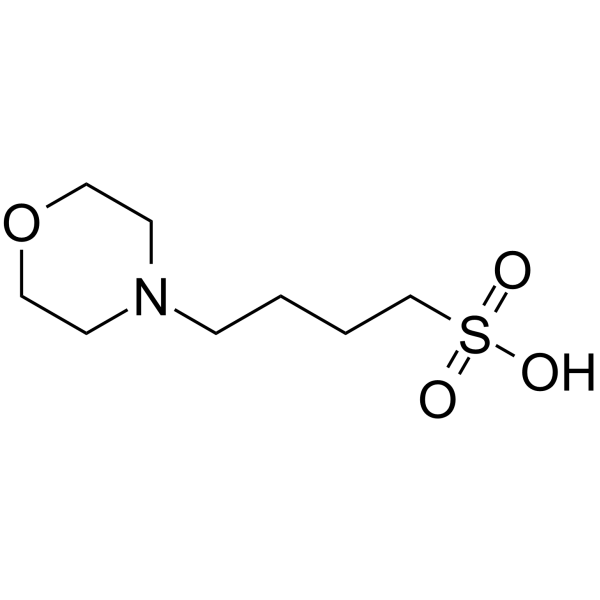
-
GC50288
MOPS, sodium salt
Used as a buffering agent

-
GC66494
MOPSO sodium
MOPSO sodium can be used for the preparation of buffer solution. MOPSO sodium is used as a biochemical reagent.
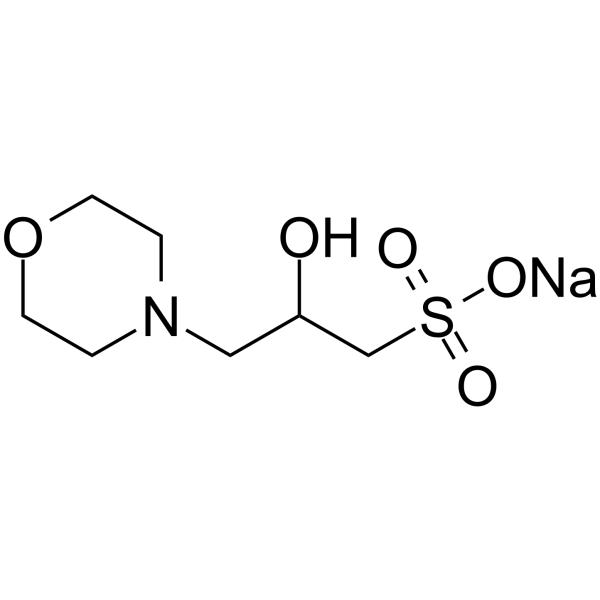
-
GC33475
N,N-Dimethylacetamide
N,N-Dimethylacetamide is an inexpensive, common aprotic organic solvent.
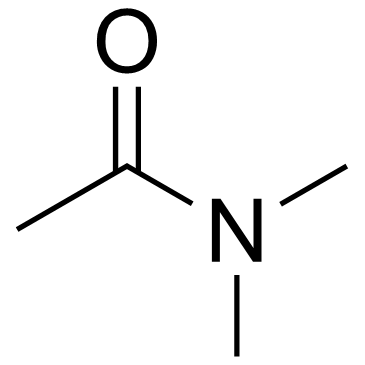
-
GC64614
N,N-Dimethylformamide
N,N-Dimethylformamide (DMF) is a polar organic solvent with a wide range of industrial applications.
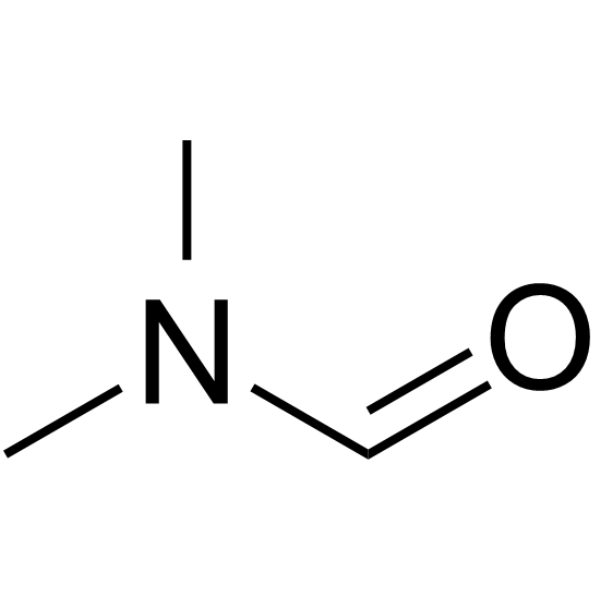
-
GC63114
N-Methylpyrrolidone
N-Methylpyrrolidone (1-Methyl-2-pyrrolidinone), a five-membered cyclic amide, is an organic polar solvent.
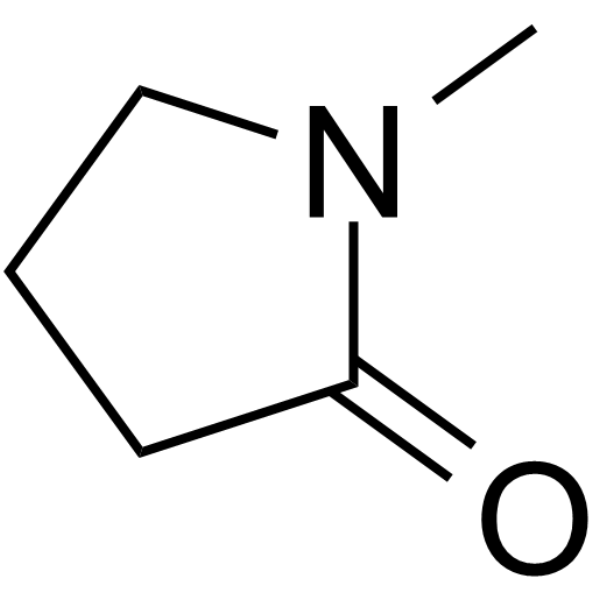
-
GC39154
N-Succinimidyl-S-acetylthioacetate
N-Succinimidyl S-acetylthioacetate (SATA), a protein modification agent, introduces thiol-groups into protein molecules.
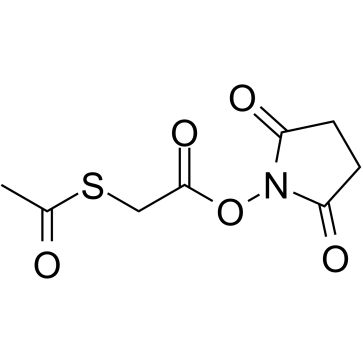
-
GC67648
Octanoyl coenzyme A lithium
Octanoyl coenzyme A lithium is a fatty acyl coenzyme A derivative. Octanoyl coenzyme A lithium can inhibit citrate synthase (CS) and glutamate dehydrogenase (GDH) with IC50 values of 0.4-1.6 mM.
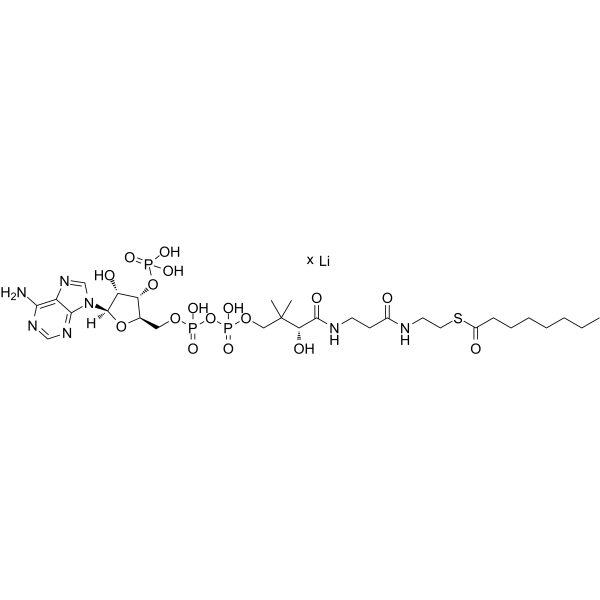
-
GC69606
Octenyl succinic anhydride
Octenyl succinic anhydride can be used to esterify starch, producing a water-soluble OS-starch with amphiphilic properties. Octenyl succinic anhydride (OSA) affects the interactions between molecules on the outer surface of two starch particles by changing the molecular surface structure.
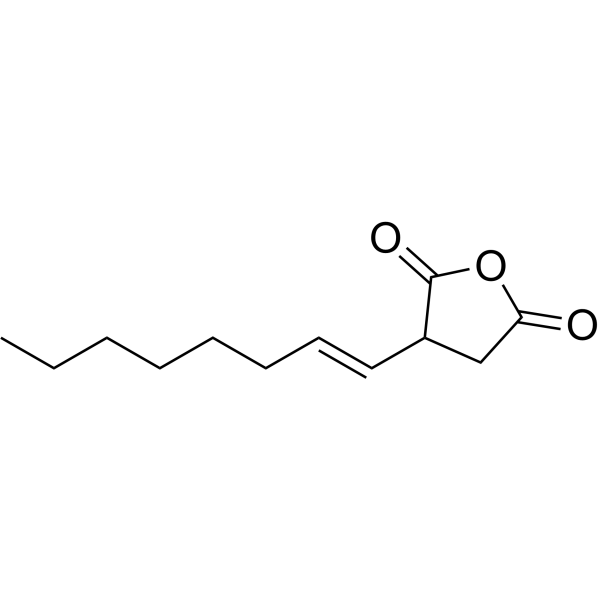
-
GC67645
Oleoyl coenzyme A lithium
Oleoyl coenzyme A (Oleoyl-CoA) lithium is a thioester of oleic acid and coenzyme A. Oleoyl coenzyme A lithium has a role as an Escherichia coli metabolite and a mouse metabolite.
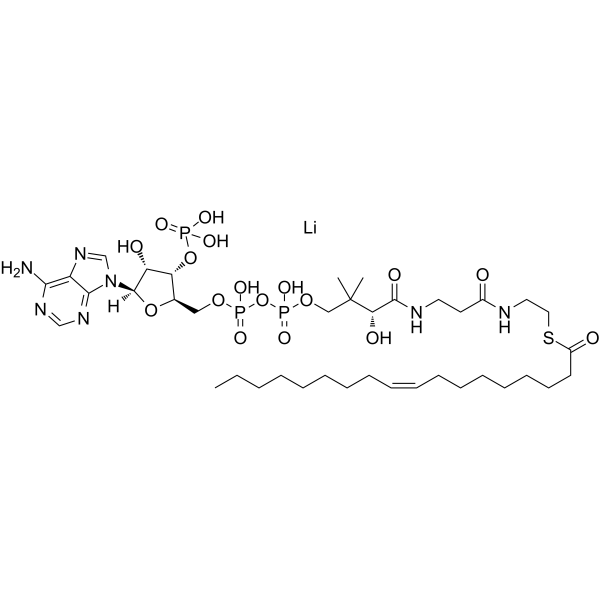
-
GC33431
ONPG (2-Nitrophenyl β-D-galactopyranoside)
ONPG (2-Nitrophenyl β-D-galactopyranoside) is a colorimetric and spectrophotometric substrate for detection of β-galactosidase activity.
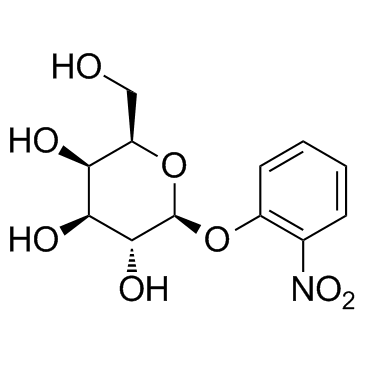
-
GC18733
PEG10000

-
GC30022
PEG300 (Glycols polyethylene)
PEG300 (Glycols polyethylene) (Polyethylene glycol 300), a neutral polymer of molecular weight 300, is a water-soluble, low immunogenic and biocompatible polymer formed by repeating units of ethylene glycol.
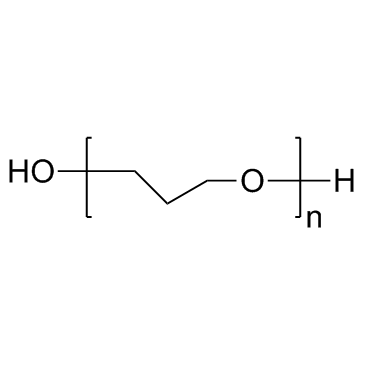
-
GC34203
PEG400
PEG400 is a strongly hydrophilic polyethylene glycol used as an excellent solvent for a large number of substances.

-
GC18373
PEG8000 (Polyethylene glycol)
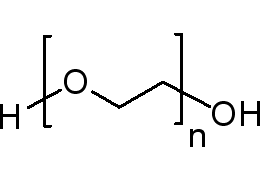
-
GC38830
Perfluamine
Perfluamine (Perfluorotripropylamine), a hydrophobic carrier fluid, is used in the surface modification of droplet polymeric microfluidic devices.
